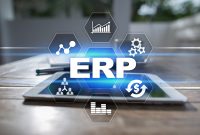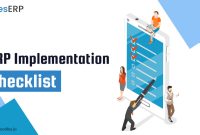Enterprise Resource Planning (ERP) systems are powerful tools that can revolutionize how businesses operate. Whether you’re upgrading your existing ERP solution or implementing one for the first time, a well-structured approach is essential. In this comprehensive guide, we’ll explore the key steps to ensure a successful ERP implementation.
Why ERP Matters
ERP systems integrate various business functions—such as finance, human resources, supply chain, and customer relationship management—into a unified platform. By doing so, they enhance efficiency, streamline processes, and provide real-time insights. Here are some reasons why ERP matters:
- Process Optimization: ERP automates routine tasks, reduces manual errors, and accelerates workflows. It ensures consistency across departments and eliminates data silos.
- Data-Driven Decision-Making: With ERP, you gain access to accurate, up-to-date information. This empowers executives and managers to make informed decisions based on real-time data.
- Scalability: As your business grows, ERP systems can scale alongside. They adapt to changing requirements, whether you’re expanding to new markets or diversifying your product offerings.
- Competitive Advantage: Organizations that effectively implement ERP gain a competitive edge. They respond faster to market shifts, improve customer satisfaction, and optimize resource allocation.
The Implementation Challenge
While the benefits of ERP are clear, the implementation process can be daunting. Challenges include:
- Complexity: ERP projects involve multiple stakeholders, intricate configurations, and data migration. A misstep can disrupt operations.
- Change Management: Employees must adapt to new processes and tools. Effective change management is crucial to minimize resistance.
- Customization: Tailoring the ERP system to your unique business needs requires careful planning.
Key Takeaways
Before we delve into the checklist, remember that ERP isn’t just about software—it’s about transforming the way you do business. Let’s explore the essential steps to ensure a successful ERP implementation.
Pre-Implementation Preparation
1. Define Clear Objectives
Before embarking on an ERP implementation journey, it’s crucial to define your objectives. Consider the following questions:
- What specific business processes do you want to improve?
- Are you aiming to enhance inventory management, financial reporting, or customer service?
- How will ERP align with your overall business strategy?
Clear objectives serve as a compass throughout the implementation process.
2. Assemble a Competent Team
ERP implementation requires collaboration across departments. Assemble a cross-functional team that includes:
- IT Experts: They handle technical aspects, system configuration, and integration.
- Business Analysts: They bridge the gap between technology and business requirements.
- End-Users: Their insights are invaluable for tailoring the system to actual needs.
- Project Managers: They ensure smooth coordination and timely execution.
3. Assess Current Processes
Evaluate your existing workflows, pain points, and inefficiencies. Understand how different departments operate. Identify bottlenecks, redundant tasks, and areas for improvement. This assessment informs your ERP customization.
4. Choose the Right ERP Solution
Selecting the right ERP system is critical. Consider factors such as:
- Scalability: Will the solution grow with your business?
- Customization: Can you tailor it to your unique processes?
- Vendor Support: Evaluate the vendor’s reputation, customer service, and ongoing support.
Implementation Phase
5. Data Migration Strategy
Data migration is a pivotal step. Ensure the following:
- Data Cleansing: Cleanse and validate data before migration.
- Data Mapping: Map existing data fields to the new system.
- Testing: Test data integrity during migration.
6. Customization and Configuration
Configure the ERP software to match your business processes. Customize fields, workflows, and user interfaces. Keep in mind that excessive customization can lead to complexity, so strike a balance.
7. Training and Change Management
Effective training is essential for user adoption. Address concerns, provide hands-on sessions, and emphasize the benefits of the new system. Change management ensures a smoother transition.
8. Pilot Testing
Before full deployment, conduct pilot testing. Involve a small group of users to identify any issues, refine configurations, and ensure a seamless experience.
Go-Live and Post-Implementation
9. Go-Live Plan
Execute the go-live plan systematically:
- Communication: Inform all stakeholders about the transition.
- Monitoring: Monitor system performance and address any glitches.
- Support: Provide post-launch support to address user queries.
Conclusion
Implementing an ERP system is akin to constructing a well-designed home. It requires meticulous planning, skilled leadership, and a commitment to long-term value. By following the checklist—assessing current systems, defining scope, choosing the right ERP, configuring, migrating data, testing thoroughly, training users, and implementing fully—you’ll pave the way for a successful ERP journey. Remember, just as a solid foundation ensures a sturdy home, a well-executed ERP implementation ensures operational efficiency and growth.
Remember, successful ERP implementation is like building a sturdy home: a solid foundation ensures long-term value and operational efficiency.



